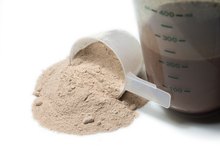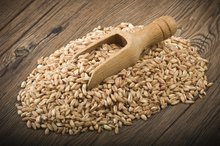What does fact checked mean?
At Healthfully, we strive to deliver objective content that is accurate and up-to-date. Our team periodically reviews articles in order to ensure content quality. The sources cited below consist of evidence from peer-reviewed journals, prominent medical organizations, academic associations, and government data.
- National Diabetes Information Clearinghouse: Diabetes Overview
- Linus Pauling Institute: Nuts
- U.S. Food and Drug Administration: Guidance for Industry: A Food Labeling Guide (14. Appendix F: Calculate the Percent Daily Value for the Appropriate Nutrients)
The information contained on this site is for informational purposes only, and should not be used as a substitute for the advice of a professional health care provider. Please check with the appropriate physician regarding health questions and concerns. Although we strive to deliver accurate and up-to-date information, no guarantee to that effect is made.
If you have diabetes, following a healthy diet is one of the most important steps you can take to control blood sugar levels. A healthy diet also lowers your risk for cardiovascular disease, which is higher when you have diabetes. Butter is a source of unhealthy fats, which can contribute to heart disease, so it should not be a regular component of your healthy diet for diabetes management.
Diabetes and Weight Control
Obesity is a risk factor for developing Type 2 diabetes, and the majority of individuals with the condition are overweight or obese. If you are overweight and have high blood sugar levels, losing weight can help you control your blood sugar levels. With 102 calories per tablespoon, butter can contribute to weight gain or interfere with efforts to lose weight. As a healthier option, take smaller portions of butter or switch to a small amount of an unsaturated fat option, such as olive oil.
- Obesity is a risk factor for developing Type 2 diabetes, and the majority of individuals with the condition are overweight or obese.
- As a healthier option, take smaller portions of butter or switch to a small amount of an unsaturated fat option, such as olive oil.
Avoid Butter for a Healthier Heart
How to Gain Weight With Protein Shakes as a Diabetic
Learn More
Diabetes increases your risk for heart disease, and a healthy diet supports heart health as well as a healthy weight and lower blood sugar levels. Butter is a poor dietary choice because each tablespoon contains 7.3 grams of saturated fat, or nearly 37 percent of the daily value -- a total of 20 grams of saturated fat daily -- based on a 2,000-calorie diet. Saturated fat can raise your cholesterol levels and increase your risk for heart disease, according to the 2010 Dietary Guidelines for Americans 4. Plant-based oils are lower in saturated fat, making them healthier choices than butter.
- Diabetes increases your risk for heart disease, and a healthy diet supports heart health as well as a healthy weight and lower blood sugar levels.
- Saturated fat can raise your cholesterol levels and increase your risk for heart disease, according to the 2010 Dietary Guidelines for Americans 4.
Choose Low-Carb Options Besides Butter
Your blood sugar levels rise after you eat foods with carbohydrates, and individuals with diabetes must carefully monitor the quantity of carbohydrates they consume and the timing. High-glycemic carbohydrates can spike your blood sugar levels, while a low-glycemic diet helps you control your blood sugar levels. The American Diabetes Association states adding fat to a meal helps lower its glycemic index 2. Instead of choosing butter, include a healthy fat such as olive oil or avocado slices.
- Your blood sugar levels rise after you eat foods with carbohydrates, and individuals with diabetes must carefully monitor the quantity of carbohydrates they consume and the timing.
Butter Alternatives
Is Butter on the Glycemic Index?
Learn More
Peanut butter is low in saturated fat and a source of fiber. Spread no-sugar-added peanut butter instead of butter on whole-grain toast. Instead of making a cold cut sandwich with buttered bread, skip the butter and add a few slices of avocado. Dip bread into olive oil instead of spreading butter on your dinner rolls, and experiment with herbs to flavor steamed vegetables instead of dousing them with melted butter.
- Peanut butter is low in saturated fat and a source of fiber.
- Dip bread into olive oil instead of spreading butter on your dinner rolls, and experiment with herbs to flavor steamed vegetables instead of dousing them with melted butter.
Related Articles
References
- Linus Pauling Institute: Nuts
- American Diabetes Association: Glycemic Index and Diabetes
- USDA National Nutrient Database: Butter, With Salt
- U.S. Department of Agriculture and U.S. Department of Health and Human Services: Dietary Guidelines for Americans 2010
- Butter, without salt. FoodData Central. U.S. Department of Agriculture. Published April 1, 2019.
- Vitamin A: Fact Sheet for Health Professionals. National Institutes of Health Office of Dietary Supplements. Updated February 14, 2020.
- Smit LA, Baylin A, Campos H. Conjugated linoleic acid in adipose tissue and risk of myocardial infarction. Am J Clin Nutr. 2010;92(1):34-40. doi:10.3945/ajcn.2010.29524
- Saturated Fat. American Heart Association.
- Trans Fats. American Heart Association.
- Margarine, regular, 80% fat, composite, tub, without salt. FoodData Central. U.S. Department of Agriculture. Published April 1, 2019.
- Butter replacement, fat-free powder. FoodData Central. U.S. Department of Agriculture. Published April 1, 2019.
- Butter cooking spray. FoodData Central. U.S. Department of Agriculture. Published April 1, 2019.
- Light butter, whipped, tub, salted. FoodData Central. U.S. Department of Agriculture. Published April 1, 2019.
- Are You Storing Food Safely?. Food and Drug Administration. Updated April 6, 2018.
Writer Bio
Natalie Stein specializes in weight loss and sports nutrition. She is based in Los Angeles and is an assistant professor with the Program for Public Health at Michigan State University. Stein holds a master of science degree in nutrition and a master of public health degree from Michigan State University.









